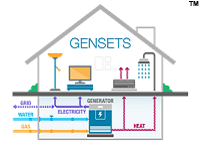
Leaves Are Falling (And So Are Temperatures) - Staying Warm with ARPA-E
It’s almost November, and as much as we all don’t want to leave spring and summer behind the time is long overdue to put away the beach gear and change out your shorts, swimsuits and flip flops for jeans, cozy sweaters and boots - because it’s fall!
The change in seasons doesn’t just mean switching from lemonade and iced tea to warm cider and hot coco, it’s also time to change your HVAC usage from air-conditioning to heat. Recent estimates by DOE’s Energy Information Administration on residential electricity consumption put space heating at 15% of all residential electricity consumption, so we at ARPA-E know that there’s a great opportunity here not only to advance technologies that keep you warm and comfortable, but also to improve efficiency and lower heating costs for all Americans.
Given that much of the United States is heading for the cold weather season, we think now is a great time to look back at some of the exciting programs and projects that ARPA-E has supported over the last decade aimed at keeping you warm at home and in the workplace!
SHIELD – Single-Pane Highly Insulating Efficient Lucid Designs

The ARPA-E SHIELD program aims to develop innovative materials and coatings that will improve the energy efficiency of existing single-pane windows in commercial and residential buildings. These technologies have the potential to cut in half the amount of heat lost through single pane windows in cold weather, providing insulation, reducing cold weather condensation, and enhancing occupant comfort. While most new window installations use double-pane units to incorporate heat-loss mitigation into their design, this program addresses retrofitting existing single-pane windows that are in use in many US homes and businesses to increase their overall efficiency and effectiveness.
University of Colorado, Boulder - Cellulose Nanocrystal Film

The team at CU-Boulder is working to develop a flexible window film made of nanostructured cellulose derived from food and beer waste that’s broken down through a bacteria-driven process. The cellulose then self-assembles into liquid crystal structures that selectively reflect infrared light and heat while transmitting visible light, ensuring heat is conserved on both sides of the window without compromising visibility as the crystals are engineered to be transparent to visible light but reflective to heat and infrared. This method has both a physical heat-conserving benefit, as well as the potential to produce significant economic benefit to owners of single-pane windows, as they can retrofit existing systems with the coating instead of having to undergo a costly replacement process.
GENSETS – Generators for Small Electrical and Thermal Systems

ARPA-E’s GENSETS program seeks to develop transformative generator technologies that enable the widespread deployment of residential combined heat and power (CHP) systems. The small, residential natural-gas fueled systems being developed in this program work with the goal to fulfil most of an average US household’s electricity, heating and hot water needs, with added benefits in electricity generation efficiency, life, cost, and emissions. What sets these residential CHP systems apart from traditional alternatives is that they burn natural gas to produce electricity and utilize that waste heat for space and water heating. They will work to help households and businesses become more energy self-reliant, and lower electricity and heating bills.
MAHLE Powertrain - Advanced Lean Burn Micro-CHP GENSET

MAHLE Powertrain, in partnership with Oak Ridge National Lab, Louthan Engineering, Kohler Company, and Intellichoice Energy designed an internal combstion enging with a turbulent jet ignition combustion system, operating similarly to an automotive internal combustion engine but utilizing natural gas as a fuel force to move the piston. This engine transforms chemical energy to mechanical energy, which is used in conjunction with a generator created electricity. Their innovative design further increases the system’s efficiency by using low friction engine components and a low-temperature after-treatment system to reduce exhaust emissions.
DELTA – Delivering Efficient Local Thermal Amenities

While some of our programs work to directly address residential and commercial heating and cooling systems, the projects in our DELTA program work to address heating and cooling challenges through the development of localized thermal management systems (LTMS). These LTMS modify the physical space around a human body to address temperature variances and changes rather than an entire building space, offering significant energy savings for the building itself and potential for increased comfort for an individual utilizing a LTMS. These projects range from on-body wearable devices to off-body installed systems, which address a variety of options for maintaining occupant comfort with potential for energy savings.
University of California, San Diego – Adaptive Textiles Technology

UC San Diego’s Adaptive Textiles Technology worked to develop smart responsive garments that enable building occupants to adjust their personal temperature settings and promote thermal comfort, potentially reducing or eliminating reliance on heating or air conditioning. Their project worked toward this goal by utilizing localized cooling and heating in the wearable structure of textiles near a person’s skin, responding through smart technology to heat transportation through changes in thickness and pore architecture by shrinking when hot and expanding when cold.
For more information on ARPA-E’s programs and projects, check out our full active program listing HERE.
